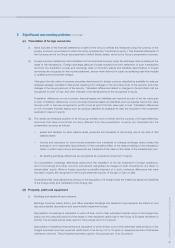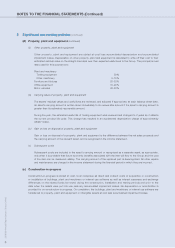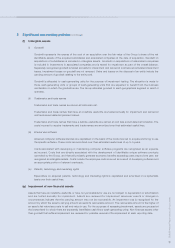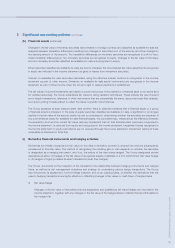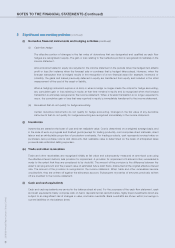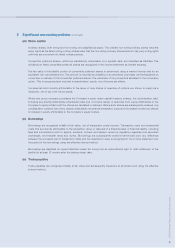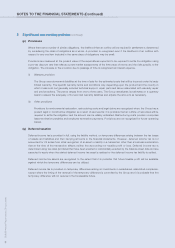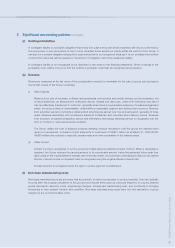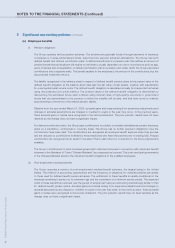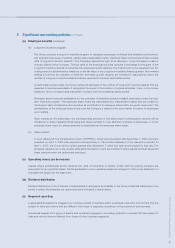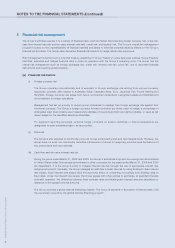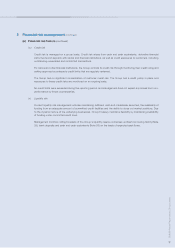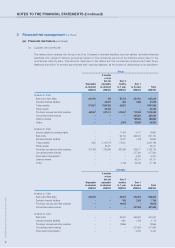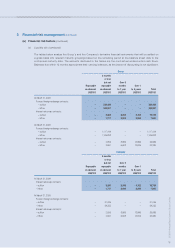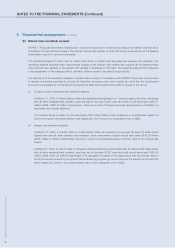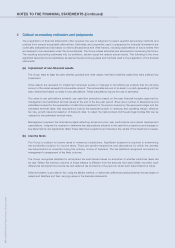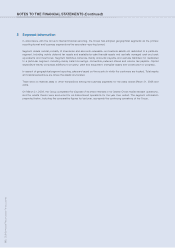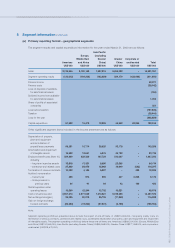Lenovo 2009 Annual Report Download - page 95
Download and view the complete annual report
Please find page 95 of the 2009 Lenovo annual report below. You can navigate through the pages in the report by either clicking on the pages listed below, or by using the keyword search tool below to find specific information within the annual report.
2008/09 Annual Report Lenovo Group Limited
93
2 Significant accounting policies (continued)
(u) Employee benefits (continued)
(iii) Long-term incentive program
The Group operates a long-term incentive program to recognize employees’ individual and collective contributions,
and includes three types of awards, namely share appreciation rights, restricted share units and performance share
units (“Long-term Incentive Awards”). The Company reserves the right, at its discretion, to pay the award in cash or
ordinary shares of the Company. The fair value of the employee services received in exchange for the grant of the
Long-term Incentive Awards is recognized as employee benefit expense. The total amount to be expensed over the
vesting period is determined by reference to the fair value of the Long-term Incentive Awards granted. Non–market
vesting conditions (for example, profitability and sales growth targets) are included in assumptions about the
number of Long-term Incentive Awards that are expected to become exercisable/vested.
At each balance sheet date, the Group revises its estimates of the number of Long-term Incentive Awards that are
expected to become exercisable. It recognizes the impact of the revision of original estimates, if any, in the income
statement, and a corresponding adjustment to equity over the remaining vesting period.
Employee share trusts are established for the purposes of awarding shares to eligible employees under the long-
term incentive program. The employee share trusts are administered by independent trustee and are funded by
the Group’s cash contributions and recorded as contributions to employee share trusts, an equity component. The
administrator of the employee share trusts buys the Company’s shares in the open market for award to employees
upon vesting.
Upon vesting by the employees, the corresponding amounts in the share-based compensation reserve will be
transferred to share capital (nominal value) and share premium for new allotment of shares to employees, or to the
employee share trusts for shares awarded to employees by the employee share trusts.
(iv) Share options
In accordance with the transitional provision of HKFRS 2, share options granted after November 7, 2002 and were
unvested on April 1, 2005 was expensed retrospectively in the income statement of the respective periods. At
April 1, 2005, the Group had no option granted after November 7, 2002 that had not yet vested on that day. The
proceeds received net of any directly attributable transaction costs are credited to share capital (nominal value) and
share premium when the options are exercised.
(v) Operating leases (as the lessee)
Leases where substantially all the rewards and risks of ownership of assets remain with the leasing company are
accounted for as operating leases. Rental applicable to such operating leases are charged to the income statement on
a straight-line basis over the lease term.
(w) Dividend distribution
Dividend distribution to the Company’s shareholders is recognized as a liability in the Group’s financial statements in the
period in which the dividends are approved by the Company’s shareholders.
(x) Segment reporting
A geographical segment is engaged in providing products or services within a particular economic environment that are
subject to risks and returns that are different from those of segments operating in other economic environments.
A business segment is a group of assets and operations engaged in providing products or services that are subject to
risks and returns that are different from those of other business segments.


